Education for Life: The Subject of Math

The Subject of Math – Click to Enlarge
This page is a free-shared non-linear educational subject outline for Math. It is purposed for use in community education environments, homeschool environments, traditional schooling environments, or as a supplemental and fun addition to any education program. As part of the complete Education for Life Program, this subject outline is specifically designed to work in conjunction with the other components: Foundations of Teaching, Curriculum, Lesson Plans for Life, Teaching Strategies, Learning Tools and Toys, Evaluation Model, and The Ultimate Classroom. If you’d like to learn how all these components work together, click here.
THESE LINKS JUMP DIRECTLY TO EACH COLOR ON THIS PAGE
RED | ORANGE | YELLOW | GREEN | BLUE | INDIGO | VIOLET
MAXIMIZE BENEFITS FROM THIS PAGE WITH THESE KEY SECTIONS
Further integration specifically with the Khan Academy Math Program is in progress.
NOTE: The colors are provided as a possible linear progression (red/easiest to violet/most challenging) for people that might prefer a more linear structure. Our core philosophy is that through creativity every color can be made easy or challenging for any learning level.
RELATED PAGES
EDUCATION OVERVIEW | HOW TO USE THIS COMPONENT | OUR OPEN SOURCE PURPOSE



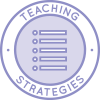
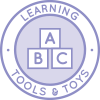
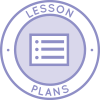




WAYS TO CONTRIBUTE TO EVOLVING THIS EDUCATION PROGRAM WITH US
SUGGESTIONS | CONSULTING | MEMBERSHIP | OTHER OPTIONS
CLICK LINKS TO VISIT THE KHAN ACADEMY’S LEARNING ARCHIVE FOR SPECIFIC LESSONS FOR EACH BULLET-POINT. AN OVERVIEW OF ALL KHAN ACADEMY SECTIONS IS IN THE ONLINE RESOURCES SECTION AT THE BOTTOM OF THIS PAGE.
RED
| NOTE: The colors are provided as a possible linear progression (red/easiest to violet/most challenging) for people that might prefer a more linear structure. Our core philosophy is that through creativity every color can be made easy or challenging for any learning level. |
 | - Compare numbers
- Know number names and the count sequence
- Count to tell the number of objects
|
 | - Understand subtraction as taking apart & taking from
- Subtracting within 20
- Subtracting within 100
|
 | - Understand addition as putting together & adding to
- Classify objects and count the number of objects in different categories
- Adding within 20
- Adding within 100
|
 | - Work with numbers 11″19 to gain foundations for place value
|
 | - Describe and compare measurable attributes using both the metric and the English measuring systems
- Measuring temperature, weight, volume, height, length, width, etc.
|
 | |
 | - Identify 2 dimensional shapes and reason with and recognize their attributes
|
 | - Identify different 3 dimensional objects and reason with and recognize their attributes
|
ORANGE
| NOTE: The colors are provided as a possible linear progression (red/easiest to violet/most challenging) for people that might prefer a more linear structure. Our core philosophy is that through creativity every color can be made easy or challenging for any learning level. |
 | - Represent and solve problems involving addition and subtraction
- Add and subtract within 20
|
 | - Understand and apply units of measurement
- Solve problems involving measurement and conversion of measurements from a larger unit to a smaller unit
|
 | - Work with equal groups of objects to gain foundations for multiplication
|
 | - Measure and estimate lengths in standard units
- Relate addition and subtraction to length
|
 | - Use place value understanding and properties of operations to perform multi-digit arithmetic
|
 | - Develop understanding of fractions as numbers
- Extend understanding of fraction equivalence and ordering
- Build fractions from unit fractions by applying and extending previous understandings of operations on whole numbers
- Understand decimal notation for fractions, and compare decimal fractions
|
 | - Solve problems involving measurement & estimation of intervals of time, liquid volumes, & masses of objects
- Geometric measurement: concepts of area & relate area to multiplication & addition
|
 | - Geometric measurement: recognize perimeter as an attribute of plane figures and distinguish between linear and area measures
- Use the four operations with whole numbers to solve problems
|
 | - Gain familiarity with factors and multiples
|
 | - Understand place value
- Generalize place value understanding for multi-digit whole numbers
- Use place value understanding and properties of operations to add and subtract
|
 | - Geometric measurement: understand concepts of angle and measure angles
|
 | - Draw and identify lines and angles, and classify shapes by properties of their lines and angles
|
 | - Multiply and divide within 100
- Represent and solve problems involving multiplication and division
- Solve problems involving the four operations; identify and explain patterns
- Understand properties of multiplication & the relationship between multiplication & division
|
 | - Generate and analyze patterns
|
 | - Begin to plot coordinates and understand the basics of a graph
|
 | - Begin calculating currency conversions and other complex problems with money
- Work with time and money
|
YELLOW
| NOTE: The colors are provided as a possible linear progression (red/easiest to violet/most challenging) for people that might prefer a more linear structure. Our core philosophy is that through creativity every color can be made easy or challenging for any learning level. |
 | - Write and interpret numerical expressions
|
 | - Analyze patterns and relationships
|
 | - Perform operations with multi-digit whole numbers and with decimals to hundredths
|
 | - Use equivalent fractions as a strategy to add and subtract fractions
|
 | - Apply and extend previous understandings of multiplication and division to multiply and divide fractions
|
 | - Measurement: understand concepts of volume & relate volume to multiplication & to addition
|
 | - Graph points on the coordinate plane to solve real-world and mathematical problems
|
 | - Classify two-dimensional figures into categories based on their properties
|
 | - Convert like measurement units within a given measurement system
|
 | - Understand ratio concepts and use ratio reasoning to solve problems
|
 | - Apply & extend understandings of multiplication & division to divide fractions by fractions
|
 | - Compute fluently with multi-digit numbers and find common factors and multiples
|
 | - Apply and extend previous understandings of numbers to the system of rational numbers
|
 | - Reason about and solve one-variable equations and inequalities
|
 | - Represent and analyze quantitative relationships between dependent and independent variables
|
 | - Solve real-world and mathematical problems involving area, surface area, and volume
|
 | - Develop understanding of statistical variability
|
 | - Summarize and describe distributions
|
 | - Apply & extend understandings of multiplication & division to divide fractions by fractions within equations with variables
|
 | - Begin to understand and apply the relationship between fractions and decimals
|
 | - Begin to understand how to read formulas
|
 | - Apply and extend previous understandings of arithmetic to algebraic expressions
|
GREEN
| NOTE: The colors are provided as a possible linear progression (red/easiest to violet/most challenging) for people that might prefer a more linear structure. Our core philosophy is that through creativity every color can be made easy or challenging for any learning level. |
 | - Analyze proportional relationships and use them to solve real-world and mathematical problems
|
 | - Use properties of operations to generate equivalent expressions
|
 | - Solve real-life and mathematical problems using numerical and algebraic equations
|
 | - Draw, construct & describe geometrical figures & describe relationships between them
|
 | - Use random sampling to draw inferences about a population
|
 | - Draw informal comparative inferences about two populations
|
 | - Investigate chance processes and develop, use, and evaluate probability models
|
 | - Know that there are numbers that are not rational & approximate them by rational numbers
|
 | - Work with radicals and integer exponents
|
 | - Understand the connection between proportional relationships, lines, & linear equations
|
 | - Analyze and solve linear equations and pairs of simultaneous linear equations
|
 | - Define, evaluate, and compare functions
- Use functions to model relationships between quantities
|
 | - Understand congruence & similarity using physical models, transparencies, or geometry software
|
 | - Understand and apply the Pythagorean Theorem
|
 | - Solve real-world and mathematical problems involving volume of cylinders, cones, and spheres
- Investigate patterns of association in bivariate data
|
 | - Extend the properties of exponents to rational exponents
|
 | - Use properties of rational and irrational numbers
|
 | - Reason quantitatively and use units to solve problems
- Apply and extend previous understandings of operations with fractions to add, subtract, multiply, and divide rational numbers
|
 | - Interpret the structure of expressions
- Write expressions in equivalent forms to solve problems
|
 | - Perform arithmetic operations on polynomials
|
 | - Create equations that describe numbers or relationships
- Understand solving equations as a process of reasoning and explain the reasoning
|
 | - Solve equations and inequalities in one variable
|
 | - Solve systems of equations
|
 | - Represent and solve equations and inequalities graphically
|
 | - Represent & calculate simple probabilities with equations
|
 | - Calculate surface areas and volumes of 3d geometric shapes
|
 | - Begin working with and understanding irrational numbers
|
 | - Understand and use irrational numbers
|
BLUE
| NOTE: The colors are provided as a possible linear progression (red/easiest to violet/most challenging) for people that might prefer a more linear structure. Our core philosophy is that through creativity every color can be made easy or challenging for any learning level. |
 | - Understand the concept of a function and use function notation
- Interpret functions that arise in applications in terms of the context
- Analyze functions using different representations
- Build a function that models a relationship between two quantities
- Build new functions from existing functions
- Interpret expressions for functions in terms of the situation they model
|
 | - Summarize, represent, and interpret data on a single count or measurement variable
- Summarize, represent, and interpret data on two categorical and quantitative variables
|
 | |
 | - Perform arithmetic operations with complex numbers
|
 | - Use complex numbers in polynomial identities and equation
|
 | - Understand the r single count or measurement variable
|
 | - Use polynomial identities to solve problems
|
 | - Extend the domain of trigonometric functions using the unit circle
|
 | - Model periodic phenomena with trigonometric functions
|
 | - Prove and apply trigonometric identities
|
 | - Translate between the geometric description and the equation for a conic section
|
 | - Make inferences & justify conclusions from surveys, experiments, & observational studies
|
 | - Use probability to evaluate outcomes of decisions
|
 | - Summarize, represent, and interpret data on two categorical and quantitative variables
|
 | |
 | - Experiment with transformations in the plane
|
 | - Understand congruence in terms of rigid motions
|
 | - Make geometric constructions
|
 | - Use coordinates to prove simple geometric theorems algebraically
- Prove geometric theorems
|
 | - Understand similarity in terms of similarity transformations
|
 | - Prove theorems involving similarity
|
 | - Define trigonometric ratios and solve problems involving right triangles
|
 | - Understand and apply theorems about circles
|
 | - Find arc lengths and areas of sectors of circles
|
 | - Understand the basic properties of waves
|
 | - Translate between the geometric description and the equation for a conic section
|
 | - Explain volume formulas and use them to solve problems
|
 | - Construct and compare linear, quadratic, and exponential models and solve problems
|
 | - Understand and evaluate random processes underlying statistical experiments
|
 | - Use irrational expressions in complex equations
|
 | - Rewrite rational expressions
|
INDIGO
| NOTE: The colors are provided as a possible linear progression (red/easiest to violet/most challenging) for people that might prefer a more linear structure. Our core philosophy is that through creativity every color can be made easy or challenging for any learning level. |
 | - Understand independence and conditional probability and use them to interpret data
|
 | - Use rules of probability to compute probabilities of compound events in a uniform model
|
 | - Represent complex numbers and their operations on the complex plane
|
 | - Represent and model with vector quantities
|
 | - Represent and model derivative equations
|
 | - Perform operations on vectors
|
 | - Perform operations on matrices and use matrices in applications
|
 | - Apply trigonometry to general triangles
|
 | - Apply trigonometry to general circles
|
 | - Calculate varying types of mathematical series
|
 | - Understand and use the fundamental theorem of calculus
|
 | - Graph complex equations on the complex plane
|
 | - Translate between the geometric description and the equation for a conic section
|
 | - Graph trigonometric equations
|
 | - Visualize relationships between two-dimensional and three-dimensional objects
|
 | - Understand spherical trigonometry
|
 | - Apply geometric concepts in modeling situations
|
 | - Use the mean value theorem
|
 | - Calculating differentiation in derivatives
|
 | - Apply geometric concepts in Euclidian space
|
 | - Understand and graph integral calculus
|
 | - Solve and graph cubic polynomial functions
|
 | - Prove and use Rolle’s Theorum
|
 | - Understand parametric equations and polar graphs
|
 | - Understand basic functions
|
 | - Understand and calculate limits for functions
|
 | - Physics: Understand and calculate equations for basic physics and classical mechanics
|
 | - Understand and calculate basic equations in astronomy
|
 | - Use mathematics in project planning and project management
|
 | - Use mathematics to understand basic economics and globalization
|
 | - Use mathematics to understand the foundations of computer science
|
 | - Use mathematical equations in basic architecture blueprints and schematics
|
 | - Use mathematics in foundational biology applications
|
 | - Use mathematics in basic chemistry applications
|
 | - Understand and graph Riemann Sums
|
 | - Understand and use integrals and derivatives
|
VIOLET
| NOTE: The colors are provided as a possible linear progression (red/easiest to violet/most challenging) for people that might prefer a more linear structure. Our core philosophy is that through creativity every color can be made easy or challenging for any learning level. |
 | - Graph trigonometric functions in Euclidean space
|
 | - Understand and graph differential geometry
|
 | - Understand and graph Symplectic Geometry
|
 | - Understand and apply contact geometry
|
 | - Understand and calculate differentiable and non-differentiable manifolds
|
 | - Understand and calculate intrinsic equations
|
 | - Calculate and understand mathematical equations for scalar fields
|
 | - Understand and use vector calculus
|
 | |
 | - Understand and use Topological Mathematics
|
 | - Design objects using fractal mathematical equations
|
 | - Calculate and use mathematical Measure and prove Measure Theory
|
 | - Use Chaos Theory Mathematics
|
 | - Use complex analysis and the theory of functions of a complex variable
|
 | - Understand and use Combinatorics
|
 | - Understand and use Combinatorial optimization
|
 | - Understand and use mathematical equations in cryptography and coding
|
 | - Understand and use applied mathematics within the fluid branch of mechanics
|
 | - Understand and use scientific computing
|
 | - Understand and use applied mathematics in advanced computer sciences and artificial intelligence
|
 | - Understand and use applied mathematics within economics and mathematical finance
|
 | - Understand and use applied mathematics within business
|
 | - Understand and use applied mathematics within engineering
|
 | - Understand and use applied mathematics within physics
|
 | - Understand and use applied mathematics within chemistry
|
 | - Understand and use applied mathematics within psychology
|
 | - Understand and use applied mathematics within biology
|
 | - Understand and use applied mathematics within scientific computation
|
 | - Understand and use mathematical finance
|
 | - Understand and use operational research and optimization
|
 | - Understand and use applied mathematics within quantum mechanics
|
 | - Understand and use quantum field theory applied mathematics within particle physics
|
 | - Understand light through quantum theory using applied mathematics
|
 | - Understand and use mathematics to understand atomic structures
|
 | - Understand and use the mathematics behind oscillations
|
 | - Understand and use applied mathematics within the statics branch of mechanics
|
 | - Understand and use applied mathematics within the kinematics branch of mechanics
|
 | - Understand and use applied mathematics within astronomy and the celestial branch of mechanics
|
 | - Understand and use applied mathematics within Statistical mechanics or statistical thermodynamics
|
 | - Understand and use applied mathematics within actuarial science and accounting
|
 | - Understand and use applied mathematics within software engineering
|
 | - Understand and use applied mathematics within advanced statistics
|
 | - Understand and use equations and diagrams within mathematical and computational sociology
|
OTHER RESOURCES
We're building a resource section. Click here if you have a suggestion or resource for this page.
OPEN SOURCE SUBJECT RESOURCES (click icons for complete pages)



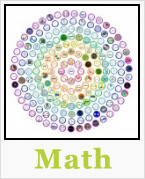



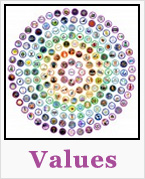
OPEN SOURCE CURRICULUM OUTLINES (click image for summaries and links to complete pages)
CARE




SHARE




PLAY




OPEN SOURCE TEACHING METHODOLOGY SUMMARIES
Montessori | Waldorf | Orff | Reggio | Multi-Intelligence | Bloom's Taxonomy | Study Tech | I-WE
INDEX OF ALL THE ONE COMMUNITY OPEN SOURCE LESSON PLANS

Click this image for the Lesson Plans for Life page with links to the rest of the lesson plans
THE WORLD'S LARGEST ONLINE FREE EDUCATION RESOURCE ARCHIVE
RELATED CONTENT AND OTHER RELATED RESOURCES
We're building this resource section. Click here if you have a suggestion or resource for this page.
OTHER RESOURCES
KHAN ACADEMY (Program Overview)
Early Math
3rd grade (U.S.)
4th grade (U.S.)
5th grade (U.S.)
6th grade (U.S.)
7th grade (U.S.)
8th grade (U.S.)
Arithmetic and Pre-Algebra
Algebra I
Geometry
Algebra II
Trigonometry
Probability and Statistics
Precalculus
Differential Calculus
Integral Calculus
Multivariable Calculus
Differential Equations
Linear Algebra
Applied Math
Recreational Math
Math Contests
NUMBERS
1, 2, 3 Counting Games
http://pbskids.org/games/123/
ABCya!
http://www.abcya.com/
Count Us in
http://abc.net.au/countusin
Gamequarium: Place Value Games
http://www.gamequarium.com/placevalue.html
Roman Numerals Games
http://www.roman-numerals.org/games.html
ADDITION
Cool Math 4 Kids: Addition
http://www.coolmath4kids.com/addition
Fun 4 the Brain: Addition
http://www.fun4thebrain.com/addition.html
Math Addition Games
http://www.learninggamesforkids.com/math-addition-games.html
Games About Math
http://www.pbskids.org/whiteboard/
SUBTRACTION
Cool Math 4 Kids: Subtraction
www.coolmath4kids.com/subtraction/
Fun 4 the Brain: Subtraction
http://www.fun4thebrain.com/subtraction.html
Gamequarium
http://www.gamequarium.com/subtraction.html
Kids’ Numbers
http://www.kidsnumbers.com/subtraction.php
Math Blaster
http://www.mathblaster.com/parents/math-games
Math Nook: Subtraction Games
www.mathnook.com/math/skill/subtractiongames.php
MULTIPLICATION
Cool Math 4 Kids: Time Tables
http://www.coolmath4kids.com/times-tables/
Fun 4 the Brain: Multiplication
http://www.fun4thebrain.com/mult.html
Kids’ Numbers
http://www.kidsnumbers.com/multiplication.php
Multiplication.com
http://www.multiplication.com/games
Play Kids’ Games: Math Games
http://www.playkidsgames.com/mathGames.htm
DIVISION
ABCYa! Division Drag Race
http://www.abcya.com/division_drag_race.htm
Division Games
http://www.divisiongames.net/
Fun 4 the Brain: Division
http://www.fun4thebrain.com/division.html
Kids’ Numbers: Division
http://www.kidsnumbers.com/division.php
My Math Games: Division
http://www.learninggamesforkids.com/math-division-games.html
Play Kids’ Games: Math Games
http://www.playkidsgames.com/mathGames.htm
FRACTIONS
Cool Math 4 Kids: Fractions
http://www.coolmath4kids.com/fractions/
PrimaryGames: Pizza Party
http://www.primarygames.com/fractions/start.htm
Fun Videos about Pi:
























 One Community
One Community


























































































































































































